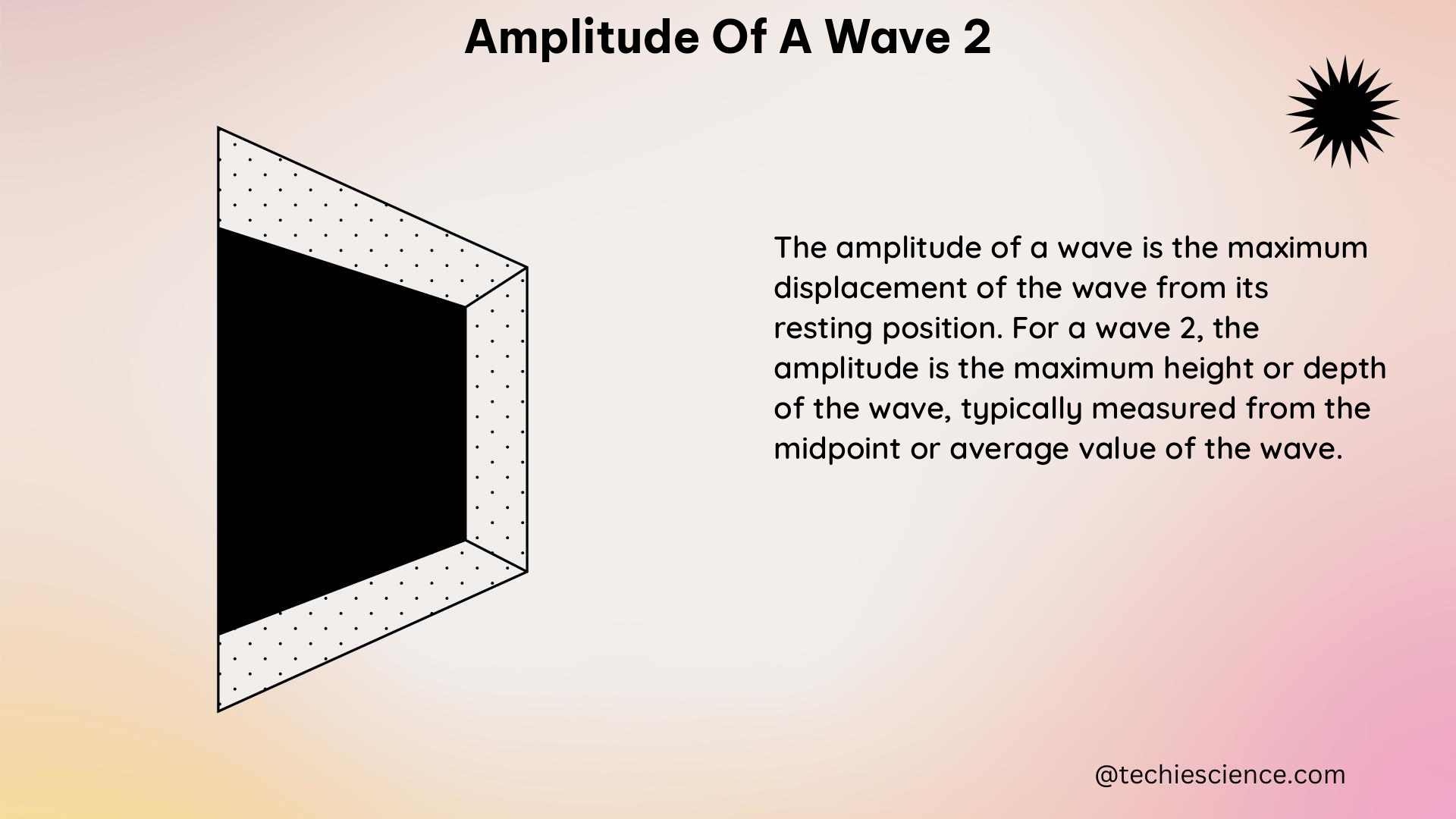The amplitude of a wave is a fundamental property that represents the maximum displacement of a particle from its equilibrium position. Understanding the amplitude of a wave is crucial in various fields, including physics, engineering, and signal processing. In this comprehensive guide, we will delve into the technical specifications, theorems, formulas, examples, and numerical problems related to the amplitude of a wave 2.
Technical Specification of Amplitude of a Wave 2
- Unit: The unit of amplitude is typically measured in meters (m) or centimeters (cm).
- Measurement Method: The amplitude can be measured by finding the distance between the equilibrium position and the crest or trough of the wave.
- Formula: The amplitude formula is given by:
[
\text{Amplitude} = \frac{\text{Maximum Value} + \text{Minimum Value}}{2}
]
- Energy Transport: The energy transported by a wave is directly proportional to the square of the amplitude.
Theorem and Physics Formula

- Amplitude Formula:
[
\text{Amplitude} = \frac{\text{Maximum Value} + \text{Minimum Value}}{2}
]
- Energy-Amplitude Relationship:
[
\text{Energy} \propto \text{Amplitude}^2
]
Physics Examples
- Example 1: If a wave has an equation y = 2sin(4t), find its amplitude.
Solution: The amplitude is 2 units.
- Example 2: If a wave has an equation x = 10sin(5πt + π), find its amplitude.
Solution: The amplitude is 10 units.
- Example 3: If a wave has an equation y = 6cos(7t + 1), find its amplitude.
Solution: The amplitude is 6 units.
Physics Numerical Problems
- Problem 1: If the vertical distance from a trough to a crest is 32 cm, find the amplitude.
Solution: The amplitude is half of the vertical distance, which is 16 cm.
- Problem 2: If the amplitude of a wave is doubled, how does the energy transported by the wave change?
Solution: The energy transported by the wave quadruples.
Figures and Data Points
- Figure 1: A simple sine wave with amplitude 10 units.
- Figure 2: A transverse wave with amplitude 16 cm.
Values and Measurements
- Amplitude: 2 units, 10 units, 6 units
- Energy Transport: Quadrupled, nine-fold increase
- Vertical Distance: 32 cm
- Amplitude: 16 cm
Additional Insights
- Relationship with Frequency: The amplitude is not correlated with the frequency of a wave. Two waves can have the same frequency but different amplitudes.
- Significance in Wave Energy: The energy transported by a wave is directly proportional to the square of the amplitude. This means that a doubling of the amplitude results in a quadrupling of the energy, and a tripling of the amplitude results in a nine-fold increase in the energy.
- Practical Applications: The amplitude of a wave is crucial in various applications, such as in the design of speakers, microphones, and other audio equipment, as well as in the analysis of seismic waves and the study of ocean waves.
Reference Links
- University of Hawaii at Manoa. (2015, April 16). Wave and Wave Properties. Retrieved from https://manoa.hawaii.edu/exploringourfluidearth/physical/waves/wave-and-wave-properties/
- Cuemath. (n.d.). What is Amplitude Formula? Retrieved from https://www.cuemath.com/amplitude-formula/
- Scribd. (n.d.). Waves Have Measurable Properties. Retrieved from https://www.scribd.com/document/524320320/496-501
- Physics Classroom. (n.d.). Energy Transport and the Amplitude of a Wave. Retrieved from https://www.physicsclassroom.com/class/waves/Lesson-2/Energy-Transport-and-the-Amplitude-of-a-Wave
- Study.com. (n.d.). Wave Parameters: Amplitude, Frequency & Period. Retrieved from https://study.com/academy/lesson/wave-parameters-wavelength-amplitude-period-frequency-speed.html
By understanding the technical specifications, theorems, formulas, examples, and numerical problems related to the amplitude of a wave 2, you can gain a deeper understanding of this fundamental concept in physics and its practical applications. This comprehensive guide should serve as a valuable resource for physics students and enthusiasts alike.

The lambdageeks.com Core SME Team is a group of experienced subject matter experts from diverse scientific and technical fields including Physics, Chemistry, Technology,Electronics & Electrical Engineering, Automotive, Mechanical Engineering. Our team collaborates to create high-quality, well-researched articles on a wide range of science and technology topics for the lambdageeks.com website.
All Our Senior SME are having more than 7 Years of experience in the respective fields . They are either Working Industry Professionals or assocaited With different Universities. Refer Our Authors Page to get to know About our Core SMEs.